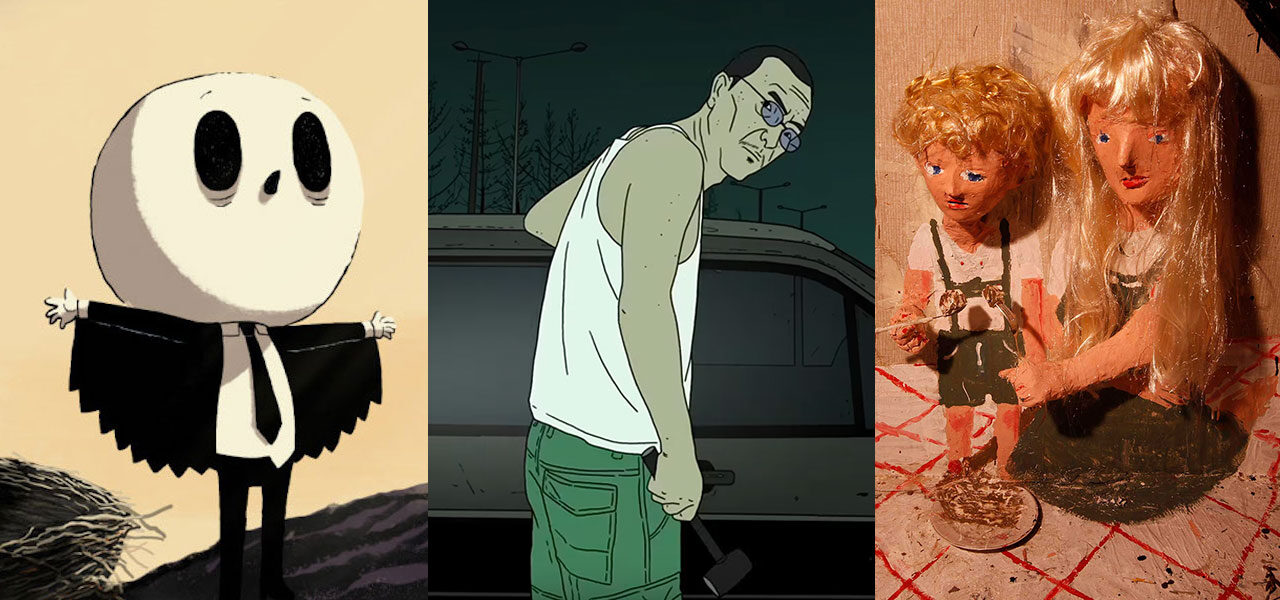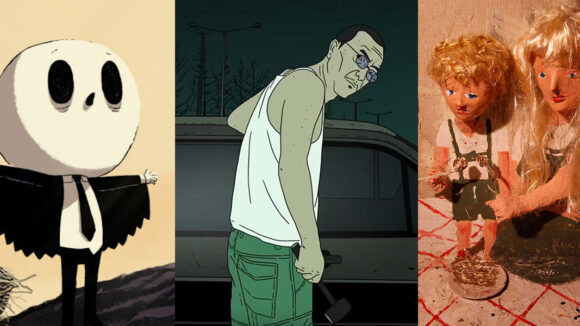

Adult Animation Is Having A Moment. Here Are 6 Essential Features To Start With.
Last month, Kristine Belson, president of Sony Pictures Animation (SPA), spoke of how she thinks the upheaval caused by the coronavirus will reshape the industry. “There will be more R-rated animated movies,” she predicted. “I think you’re going to see PG-13 animated movies, which is something you haven’t seen before.”
Only in Hollywood does the idea of adult animation seem novel. Other branches of the industry — tv, streaming, and indie features, not to mention the short film circuit — have demonstrated that the medium is just that: a medium, capable of telling any story to any audience, and not a self-contained family genre. Not only that, the market for mature animation is growing and diversifying like never before. If Belson is showing interest, it isn’t just because of the coronavirus.
SPA has a few R-rated features in the works, including at least one from Genndy Tartakovsky. What they’ll look like is anyone’s guess. While we’re waiting, we’ve compiled an entirely subjective list of films that show what adult animation can look like. Made outside the strictures of the studio system, these six features are free to tackle themes, tell jokes, and show images that would scandalize a Pixar executive.
All the films were released in the last five years. We’ve omitted anime, an industry its own right, which has long catered to a variety of audiences, and merits a list of its own. (It’s worth noting that The Association of Japanese Animation, which publishes an annual report on the industry, recently identified the rise of older-skewing animated features in the West as a possible threat to anime’s overseas market.)
Otherwise, we followed no criteria — just our own tastes. Enjoy…
Anomalisa (Charlie Kaufman and Duke Johnson, U.S.)
A consultant starts to confuse faces, voices, and objects on a work trip to Cincinnati. Charlie Kaufman’s meditation on loneliness and mental disturbance, which he first wrote as a play, is perfectly suited to the uncanniness of puppets (the stop-motion animation comes courtesy of Duke Johnson). As an Oscar-nominee attached to Kaufman’s name, Anomalisa has a higher profile than the other films on this list. Even so, it only took $3.76 million at the domestic box office — far short of its budget — indicating how rarely non-Hollywood animated features break through in the U.S.
Birdboy: The Forgotten Children (Alberto Vázquez and Pedro Rivero, Spain)
A piglet deals heroin, a chick dodges police bullets, and a mouse is guilt-tripped by her Christian fundamentalist parents. Alberto Vázquez, whose background lies in underground comics, delights in appropriating cutesy animal figures to tell dark stories about spiritual desolation. His debut feature, written and directed with Pedro Rivero, is no different. Based on Vázquez’s graphic novel Psychonauts (and its short film adaptation), Birdboy: The Forgotten Children is funny, sad, sweet, macabre, and surgeon-sharp in its dissection of modern Spain’s social ills.
The Wolf House (Joaquín Cociña and Cristóbal León, Chile/Germany)
If the Brothers Quay decamped to Chile and steeped themselves in the country’s fascist history, they might produce something like this. Developed haphazardly from a series of museum installations, The Wolf House is a stop-motion tour de force, staged as a single sequence. From a barebones fairytale premise — a young girl hides from an unseen wolf — the film spins a disquieting allegory about Chile’s inglorious ties with Nazis. It is pure atmosphere. It deserved its jury distinction at Annecy.
Chris the Swiss (Anja Kofmel, Switzerland/Croatia/Germany/Finland)
In 1992, foreign correspondent Christian Würtenberg was killed in the Yugoslav War in murky circumstances. Decades later, his cousin, the filmmaker Anja Kofmel, set out to learn what happened — and why Würtenberg was drawn to this grim conflict in the first place. The result is the hybrid Chris the Swiss, a fine example of the flourishing genre of “war animation” (think Another Day of Life or Waltz with Bashir). Newsreel footage and live-action interviews create a verité-style immediacy, while Würtenberg’s personal side — and Kofmel’s own feeling about him — are depicted in elegant monochrome animation.
Have a Nice Day (Liu Jian, China)
Lowlifes and crooks dream of having a nice life in Liu Jian’s second feature, which the renegade Chinese director made practically on his own. Shady characters pursue a stack of stolen cash in the belief that money will brighten their bleak existence. The crime, the intertwining narratives, the discursive chats about pop culture: Tarantino is a clear reference point. But in revealing the dark side of China’s modernization, the film displays its own subversive streak. Sure enough, after being selected at Annecy, it was pulled from the line-up at the behest of the Chinese government.
Ethel & Ernest (Roger Mainwood, U.K.)
No sex or drugs in this, a placid, exquisitely observed chronicle of an ordinary English marriage. The narrative runs from the 1920s to the 1970s, a period whose massive upheavals counterpoint the gentle consistency of the couple’s life. This is the story of the parents of Raymond Briggs, creator of The Snowman, who wrote and illustrated the eponymous graphic novel, and the film is shot through with a rare intimacy. The material is barely PG-13, but the emphasis is on the small joys and sporadic disappointments of life. What’s more adult than that?
(Images at top, l-r: “Birdboy: The Forgotten Children,” “Have a Nice Day,” “The Wolf House”)

.png)